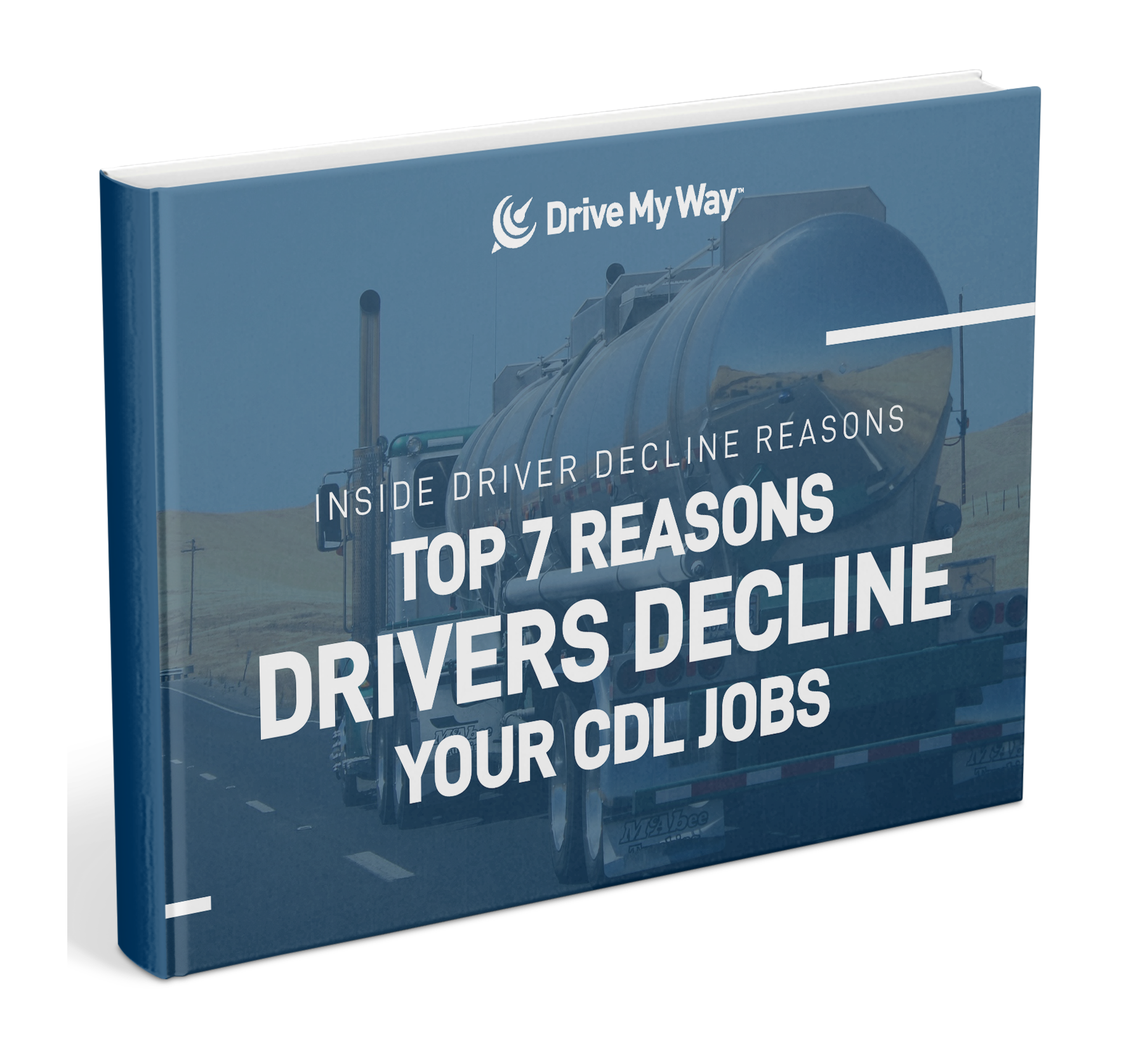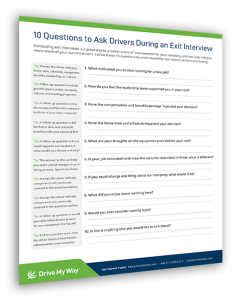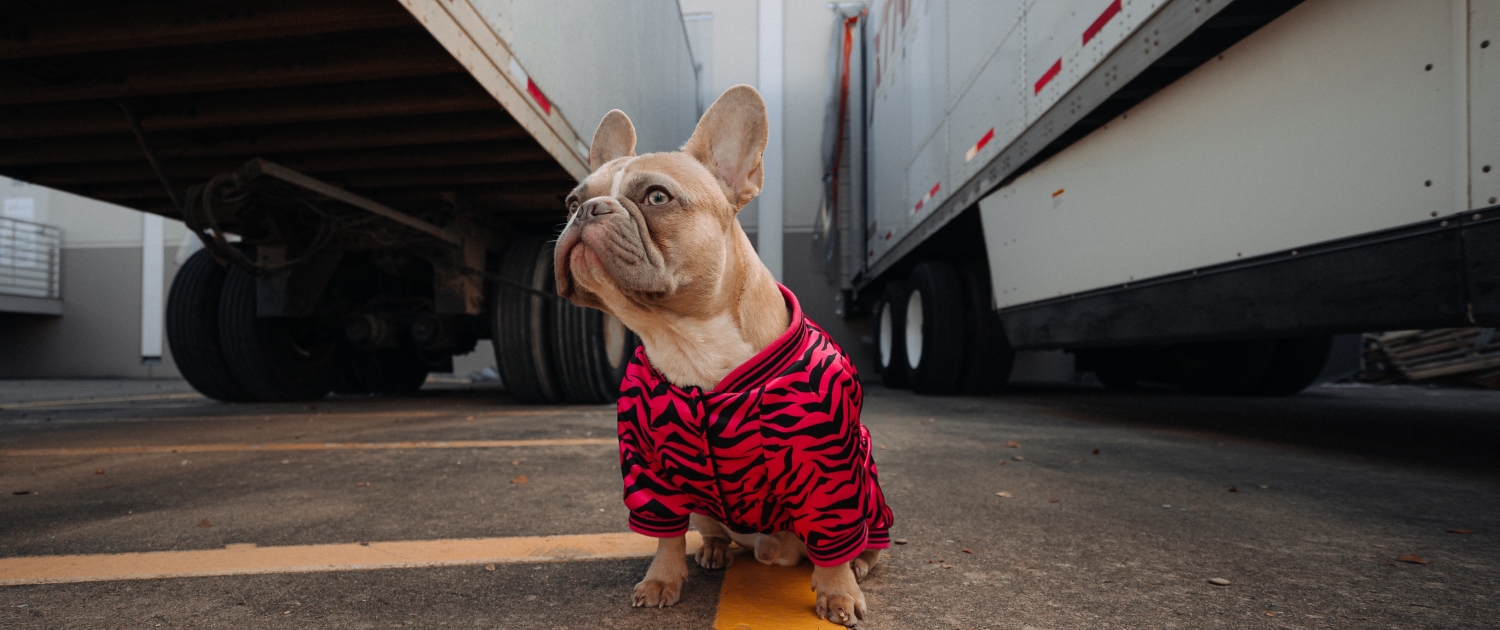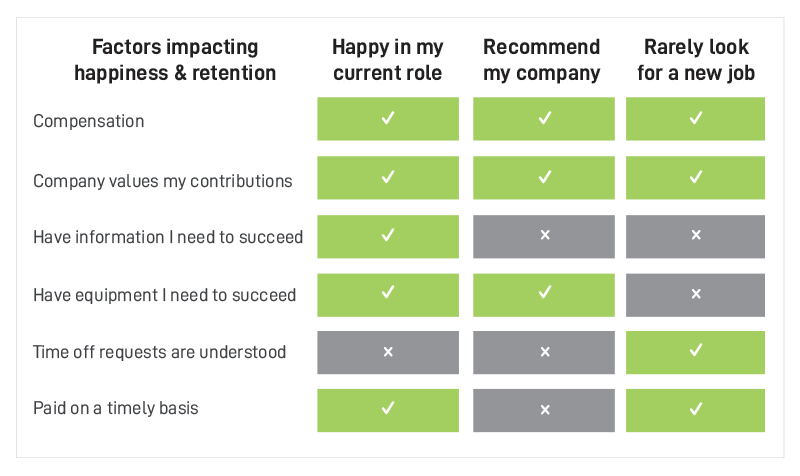
Success as a truck driver recruiter is based on two things. Finding the best candidates for the job and doing it quickly. Recruiters have a limited budget and time with which to acquire top talent for their carriers. As a result, efficiency is essential in truck driver recruiting. The good news is that in this data-driven age, measuring recruiting efficiency is easier than ever.
There are a number of different metrics that can help you evaluate the effectiveness of your recruiting process. Doing this will not only help you hire the best candidates, but also tell you where to best allocate your time and money. Here are five ways to measure success in truck driver recruiting.
1. Time to Hire
The number one reason that truck drivers end up declining a job is because they’ve already accepted a different offer that reached them first. This is why quickly moving your candidates through the recruiting pipeline is so important.
Simply put, time to hire is how long it takes a company to hire a candidate, from their first contact with them all the way to the candidate accepting the offer of employment.
Among other things, this metric is indicative of both the efficiency of your recruiting team and the candidate’s experience. That’s why HR and recruiting professionals put such an emphasis on it.
Having a structured and organized hiring process is the best way to improve your time to hire. For more information on speeding up your time to hire, you can read our blog on the subject.
2. Cost Per Hire
Time isn’t the only way to measure efficiency in recruiting. Cost per hire or CPH is an essential metric that measures how economically efficient your recruitment process is.
Cost per hire adds up all the expenses that go towards hiring new employees and divides that over the total number of hires for a given period of time. The great thing about this metric is that you can slice it up a number of different ways so that you can see how much it costs to hire based on haul type, region, hiring terminal, and more.
Understanding this metric will open the door for your recruiting team to try different ways to hire drivers for less money. Maybe you’re finding that you don’t need to spend as much to hire in your Jacksonville terminal as you do in your Montgomery terminal. Or, since your cost to hire local drivers is so low, you can move some of that money towards filling harder hauls, like flatbed or tanker jobs. Try changing your process and seeing where your CPH ends up. Eventually you’ll find what works for your carrier.
3. Channel Effectiveness
Gone are the days of putting up some flyers and placing your job ad in the newspaper. Digital is king now, with most interested drivers coming from Google searches, Facebook postings, and online job boards. With all of these channels available, identifying where applicants are coming in from can be incredibly helpful.
Understanding channel effectiveness can be done by measuring the number of successful conversions by channel. You can also break down channels by job type or geographical region. Don’t assume that the same channels or sources are equally effective across jobs or locations. Maybe your OTR job leads come in mostly through referrals, while company drivers come in through Facebook.
You can calculate the cost efficiency of your sourcing channels fairly easily. First, find the amount of money spent on advertisements on each channel. Then, divide that by the number of visitors who successfully applied for the job to find the sourcing channel cost per hire. Once you’ve found that, you can start to see which channels are working for your carrier and allocate your recruiting budget accordingly.
4. First Year Performance
The above metrics take into account truck driver recruiting efforts before the job starts. But those aren’t the only ones you should be looking at. Connecting recruiting efforts with the quality of your hires and their first-year job performance can help you see if your recruiting team is going after the right candidates.
Speaking to the hiring manager or supervisor will start to paint a picture of the performance of your hires. This can take into account everything from productivity, safety concerns, and cultural fit with the carrier.
Once you’ve gathered information from supervisors and HR, see if you can find any patterns with recent hires. Are new hires less productive than other drivers? Are they involved in accidents at a higher rate than other drivers? If you don’t see any red flags, consider it a success. If you do, it may be time to re-evaluate your criteria for hiring.
5. Job Satisfaction
Measuring driver satisfaction is one of the secrets to measuring recruiting success and maximizing driver retention. Drivers and fleets are both looking for a strong match. If drivers aren’t happy with their carrier, it’s only a matter of time before they start looking elsewhere. Given the current state of the trucking industry, your fleet can’t afford to lose a driver after already spending resources on hiring and onboarding.
Do whatever it takes to keep drivers longer, and that starts with measuring their job satisfaction. You can do this a few different ways. Consider an anonymous survey, suggestion box, or even conducting stay interviews with current drivers. This type of open-ended driver feedback is best so that you learn about drivers’ likes, dislikes, wishes, and frustrations in more detail.
After drivers have given feedback, it’s the carrier’s responsibility to address their concerns, or risk losing them to rival carriers.
A low job satisfaction rating by the driver indicates one of two things. Either, the driver was a poor fit for the position, or job expectations were not clearly communicated. Either way, this provides more information to truck driver recruiters, who can then use this information to improve the quality of hires and improve recruitment practices.
Finding the perfect fit is the most important thing when it comes to truck driver recruiting. That’s why fleet managers and driver recruiters all across the country are choosing to partner with Drive My Way.
Our patented and proprietary technology matches more than 10,000 CDL drivers a month with the perfect carrier based on their professional qualifications and personal lifestyle preferences.
 Comprehensive CDL Recruitment Solutions
Comprehensive CDL Recruitment Solutions
Ready to start recruiting the right drivers? Our solutions experts are happy to answer any questions and show you how Drive My Way uniquely approaches CDL driver recruitment.






 Truck driver retention is a well-documented problem in the trucking industry. Carriers are finding it harder and harder to retain qualified drivers after they’ve joined their fleet. The problem is even worse in the
Truck driver retention is a well-documented problem in the trucking industry. Carriers are finding it harder and harder to retain qualified drivers after they’ve joined their fleet. The problem is even worse in the  If you’re experiencing a high turnover of new drivers, the most important thing to do is figure out why. And the best people to ask? The drivers who are leaving.
If you’re experiencing a high turnover of new drivers, the most important thing to do is figure out why. And the best people to ask? The drivers who are leaving. Everybody wants to feel appreciated at their job, and everybody likes to have tangible goals that they can work towards and achieve. This is the guiding principle behind having awards and incentive programs in the workplace.
Everybody wants to feel appreciated at their job, and everybody likes to have tangible goals that they can work towards and achieve. This is the guiding principle behind having awards and incentive programs in the workplace.  Upgrading the amenities for your fleet of trucks can be a costly venture for organizations. However, carriers should consider that the increased truck driver retention that comes from offering amenities might be worth the initial investment, especially if you have a lot of OTR/Regional drivers.
Upgrading the amenities for your fleet of trucks can be a costly venture for organizations. However, carriers should consider that the increased truck driver retention that comes from offering amenities might be worth the initial investment, especially if you have a lot of OTR/Regional drivers.  Turnover isn’t always a product of a driver simply getting a better pay package somewhere else. Sometimes, drivers leave because they feel they’ve been misled about what the position was before they came onboard.
Turnover isn’t always a product of a driver simply getting a better pay package somewhere else. Sometimes, drivers leave because they feel they’ve been misled about what the position was before they came onboard.  Not every driver is a fit for every carrier, and that’s ok. Recruiting isn’t about finding any driver for the position. It’s about finding the
Not every driver is a fit for every carrier, and that’s ok. Recruiting isn’t about finding any driver for the position. It’s about finding the  Comprehensive CDL Recruitment Solutions
Comprehensive CDL Recruitment Solutions

 It’s no surprise that pay and benefits are the biggest reason that truck drivers leave one position for another. Carriers are finding that they need to go above and beyond from a compensation and benefits perspective, as offering the industry average simply isn’t cutting it anymore.
It’s no surprise that pay and benefits are the biggest reason that truck drivers leave one position for another. Carriers are finding that they need to go above and beyond from a compensation and benefits perspective, as offering the industry average simply isn’t cutting it anymore. Carriers who over-promise and under-deliver are finding that that model for attracting drivers is no longer solid. Truck drivers have more options than ever before when it comes to which carrier they can drive for, so being honest and transparent are the best things carriers can do during the interview and hiring process if they want to recruit top talent.
Carriers who over-promise and under-deliver are finding that that model for attracting drivers is no longer solid. Truck drivers have more options than ever before when it comes to which carrier they can drive for, so being honest and transparent are the best things carriers can do during the interview and hiring process if they want to recruit top talent.  As the saying goes, employees don’t leave the company. Employees leave the people at the company. If a truck driver finds themselves working with a dispatcher they truly dislike, it won’t be long before they start looking for a different opportunity.
As the saying goes, employees don’t leave the company. Employees leave the people at the company. If a truck driver finds themselves working with a dispatcher they truly dislike, it won’t be long before they start looking for a different opportunity. Now more than ever, the ability for carriers to retain truck drivers is key. As the labor market
Now more than ever, the ability for carriers to retain truck drivers is key. As the labor market The last thing a driver wants is a carrier that over-promises and under-delivers. Before posting a job, carriers should take the time to l
The last thing a driver wants is a carrier that over-promises and under-delivers. Before posting a job, carriers should take the time to l Sometimes it takes a carrier posting a job advertisement on Facebook for them to find out that their current drivers are unsatisfied. Maybe their pay is too low, their benefits aren’t desirable, or the carrier over-promises and under-delivers.
Sometimes it takes a carrier posting a job advertisement on Facebook for them to find out that their current drivers are unsatisfied. Maybe their pay is too low, their benefits aren’t desirable, or the carrier over-promises and under-delivers.  Instead of constantly investing in lofty sign-on bonuses to attract new drivers, carriers should implement referral bonus programs and
Instead of constantly investing in lofty sign-on bonuses to attract new drivers, carriers should implement referral bonus programs and 

 As truck driver retention continues to be an issue across the industry, companies should take every opportunity to show their drivers that they’re appreciated for the work they do day in and day out. One of the best ways to show your carrier’s appreciation is to take time to celebrate a driver’s work anniversary.
As truck driver retention continues to be an issue across the industry, companies should take every opportunity to show their drivers that they’re appreciated for the work they do day in and day out. One of the best ways to show your carrier’s appreciation is to take time to celebrate a driver’s work anniversary.  There’s no substitute for cash. Rewarding drivers who’ve stayed on with your carrier with a
There’s no substitute for cash. Rewarding drivers who’ve stayed on with your carrier with a  Aside from cash, gift cards are another great option. You could go with something universal that would work for almost anyone, like an Amazon or Target gift card, or you could go for something a little more personalized.
Aside from cash, gift cards are another great option. You could go with something universal that would work for almost anyone, like an Amazon or Target gift card, or you could go for something a little more personalized.  Gift cards and cash are great, but to certain drivers, there’s a chance they’ll come across as a little impersonal. Instead,
Gift cards and cash are great, but to certain drivers, there’s a chance they’ll come across as a little impersonal. Instead,  It’s hard to overstate the value of an unexpected day off. Rewarding loyal drivers with a surprise extra day of vacation or PTO can be the best way to celebrate, especially if you know the driver has a family/children they can enjoy their time off with.
It’s hard to overstate the value of an unexpected day off. Rewarding loyal drivers with a surprise extra day of vacation or PTO can be the best way to celebrate, especially if you know the driver has a family/children they can enjoy their time off with.
 The number one reason that truck drivers end up declining a job is because they’ve already accepted a different offer that reached them first. This is why quickly moving your candidates through the recruiting pipeline is so important.
The number one reason that truck drivers end up declining a job is because they’ve already accepted a different offer that reached them first. This is why quickly moving your candidates through the recruiting pipeline is so important. Time isn’t the only way to measure efficiency in recruiting. Cost per hire or CPH is an essential metric that measures how
Time isn’t the only way to measure efficiency in recruiting. Cost per hire or CPH is an essential metric that measures how  Gone are the days of putting up some flyers and placing your job ad in the newspaper. Digital is king now, with most interested drivers coming from Google searches,
Gone are the days of putting up some flyers and placing your job ad in the newspaper. Digital is king now, with most interested drivers coming from Google searches,  The above metrics take into account truck driver recruiting efforts before the job starts. But those aren’t the only ones you should be looking at. Connecting recruiting efforts with the quality of your hires and their first-year job performance can help you see if your recruiting team is going after the right candidates.
The above metrics take into account truck driver recruiting efforts before the job starts. But those aren’t the only ones you should be looking at. Connecting recruiting efforts with the quality of your hires and their first-year job performance can help you see if your recruiting team is going after the right candidates.  Measuring driver satisfaction is one of the secrets to measuring recruiting success and maximizing driver retention. Drivers and fleets are both looking for a strong match. If drivers aren’t happy with their carrier, it’s only a matter of time before they start looking elsewhere. Given the current state of the trucking industry, your fleet can’t afford to lose a driver after already spending resources on hiring and onboarding.
Measuring driver satisfaction is one of the secrets to measuring recruiting success and maximizing driver retention. Drivers and fleets are both looking for a strong match. If drivers aren’t happy with their carrier, it’s only a matter of time before they start looking elsewhere. Given the current state of the trucking industry, your fleet can’t afford to lose a driver after already spending resources on hiring and onboarding.  At this point, the trucking shortage has become the normal state of things. It’s widely understood that the demand for truck drivers is much higher than the supply of drivers looking for jobs. Because of this, trucking companies are doing whatever they can to keep current drivers happy and bring new ones onboard. This includes pay increases, newer trucks and equipment, increased home time, and more.
At this point, the trucking shortage has become the normal state of things. It’s widely understood that the demand for truck drivers is much higher than the supply of drivers looking for jobs. Because of this, trucking companies are doing whatever they can to keep current drivers happy and bring new ones onboard. This includes pay increases, newer trucks and equipment, increased home time, and more.

 Being a pet friendly trucking company is more than just a perk for some drivers. Offering a pet rider program strengthens company culture, retention, and recruiting. Ultimately, pet programs are about driver satisfaction and happiness and should be considered part of an overarching retention strategy. With strong marketing that displays a positive company culture, pet programs can also bolster driver recruitment efforts.
Being a pet friendly trucking company is more than just a perk for some drivers. Offering a pet rider program strengthens company culture, retention, and recruiting. Ultimately, pet programs are about driver satisfaction and happiness and should be considered part of an overarching retention strategy. With strong marketing that displays a positive company culture, pet programs can also bolster driver recruitment efforts.  Offering a pet program is a great way to boost driver happiness and
Offering a pet program is a great way to boost driver happiness and 


 According to Drive My Way’s
According to Drive My Way’s 


